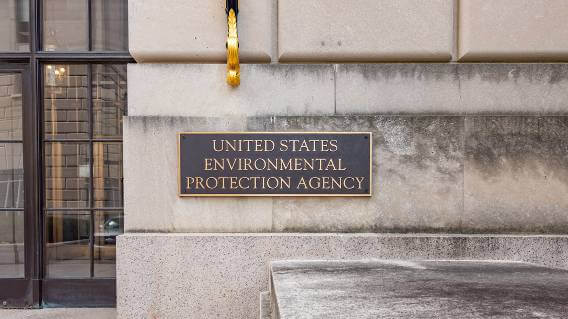EPA Implements Stricter Regulations for Asbestos Industry
Legislation & LitigationWritten by Michelle Whitmer | Edited By Walter Pacheco

Asbestos manufacturers and processors are now subject to heightened regulations following completion of the final reporting rule under the U.S. Environmental Protection Agency’s Toxic Substances Control Act.
On July 6, the EPA mandated reporting and record-keeping obligations for companies that manufacture, import or process asbestos and asbestos-containing products.
“We know that exposure to asbestos causes cancer and other serious health problems that still result in thousands of people dying every year, and today we’re continuing our work to protect people from this dangerous chemical,” said Michal Freedhoff, the EPA’s assistant administrator for the Office of Chemical Safety and Pollution Prevention, in a statement.
“We’ve already proposed to ban chrysotile asbestos, and the data we’ll receive from this final rule will help us to better evaluate and address the health risks from the remaining uses and types of asbestos,” he added.
Data Due to EPA in Early 2024
Manufacturers and processors who dealt with asbestos from 2019 to 2022 and had annual sales over $500,000 in any of those years must report asbestos-related data, including amounts processed, usage types and employee information.
This rule also applies to asbestos-containing products and asbestos within mixtures. Affected companies have nine months from the final rule to gather and submit the data to the EPA.
The types of asbestos include:
- Actinolite
- Amosite
- Anthophyllite
- Chrysotile
- Crocidolite
- Tremolite
“Reported information will be used by [the] EPA and other federal agencies in considering potential actions involving asbestos, including EPA’s TSCA risk evaluation and risk management activities,” according to the EPA’s final rule. “Requiring reporting may also increase public access to this information, which improves information quality overall, and may help inform and improve compliance assurance and accountability, and drive industry innovation.”
The final reporting rule is one of a series of actions by the EPA to address the health risks associated with asbestos. In 2022 the agency proposed a ban on ongoing uses of chrysotile asbestos, which is the only known form of asbestos being imported into the U.S., according to the agency. It is primarily used in the chloralkali industry.
Asbestos Risks and Health Concerns
Asbestos is not banned in the U.S., but it is highly regulated. It is a naturally occurring mineral that was once widely used in building materials, cement, insulation, fireproofing materials, auto parts and more. It often can develop along talc deposits and can contaminate talc.
Between 1940 and 1979, approximately 27 million workers were exposed to aerosolized asbestos products, according to the Agency for Toxic Substances & Disease Registry. Now, about 1.3 million construction and industry workers remain at risk.
Inhaling or ingesting asbestos fibers can cause them to become trapped in the body and lead to inflammation, scarring and cancer. Exposure to asbestos is the primary cause of mesothelioma, a rare cancer, and asbestosis, a progressive lung disease. Secondary asbestos exposure can also put people at risk of developing health issues.
Renovation or demolition work can lead to exposure to asbestos. Many older buildings contain legacy products such as vinyl asbestos floor tiles, cement, roofing felt, adhesives, sealants and coatings, and reinforced plastics.
Hundreds of thousands of patients and families have filed asbestos lawsuits. The claims can provide compensation for Mesothelioma to cover medical bills and lost wages. Loved ones who develop mesothelioma through secondhand exposure may also file a legal claim.







